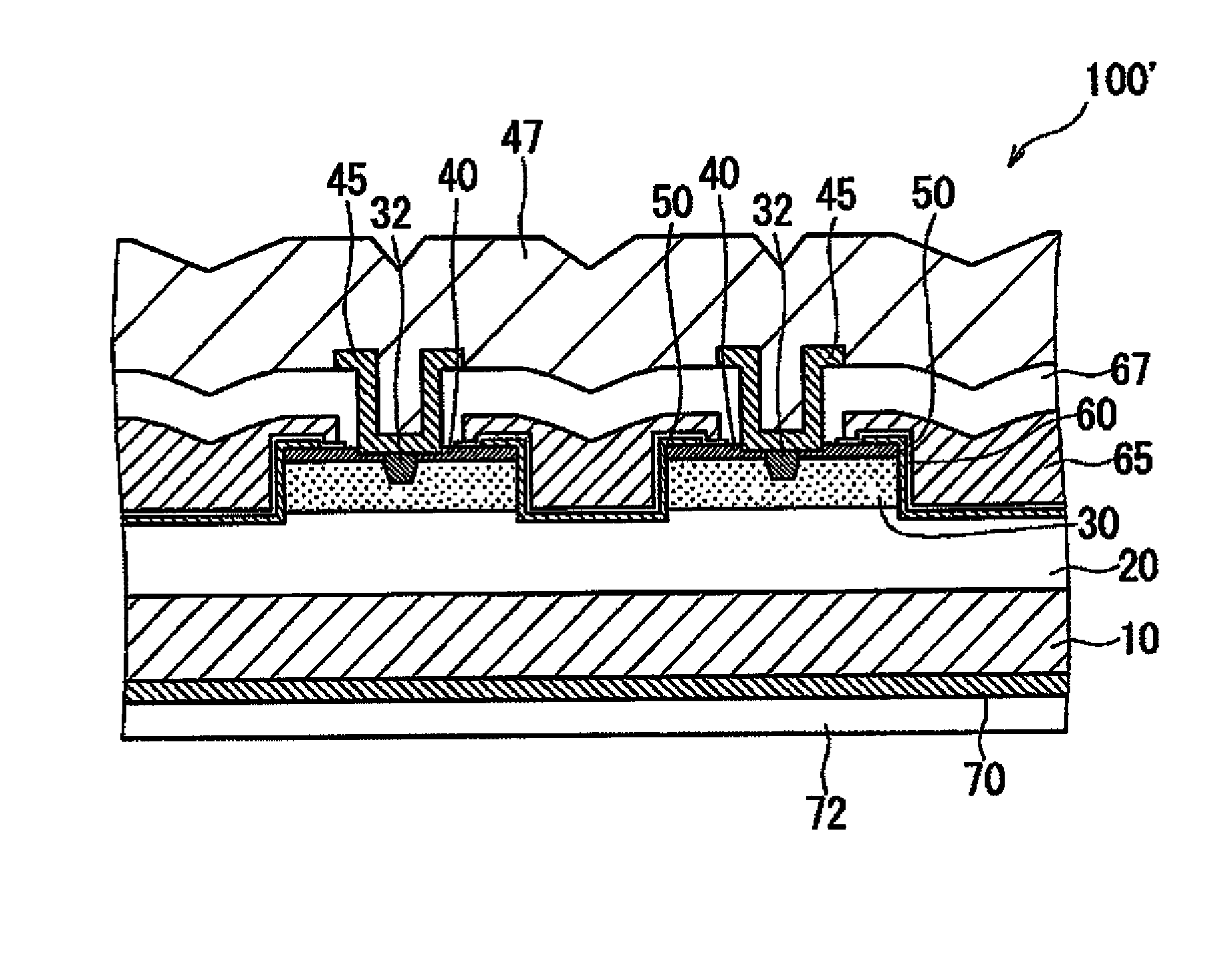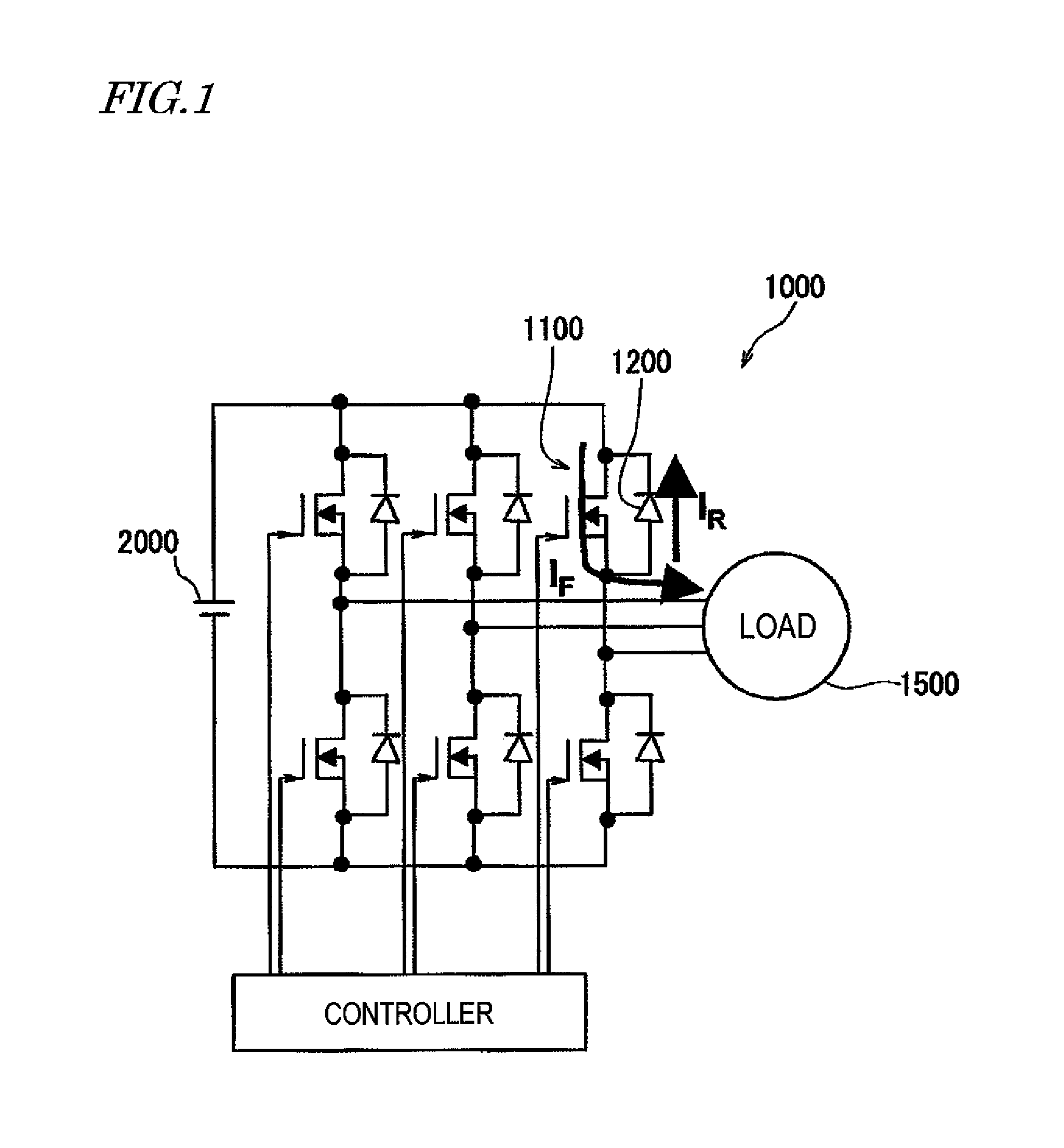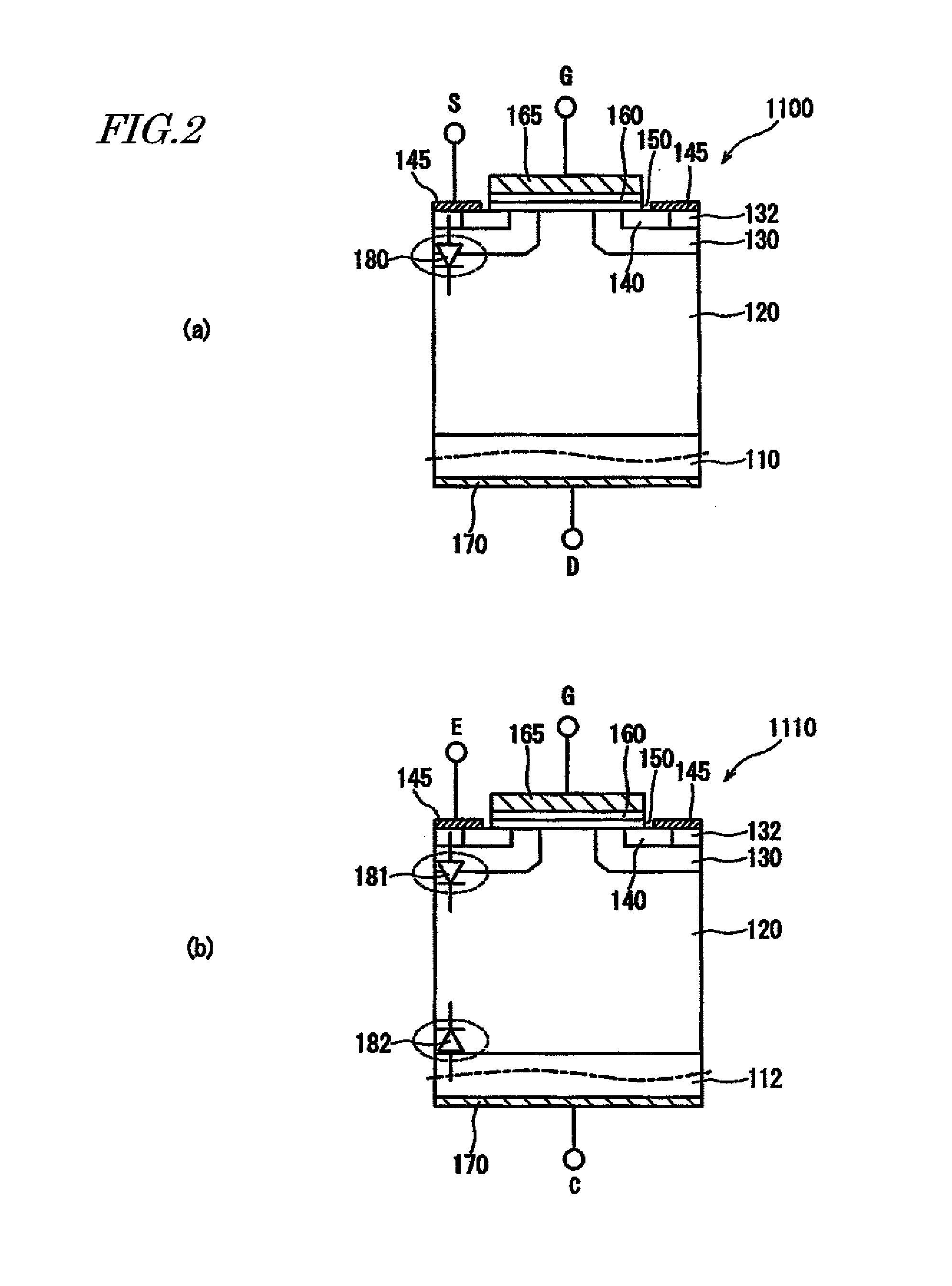Semiconductor element, semiconductor device, and power converter
a technology of semiconductor devices and semiconductor elements, applied in the field of semiconductor devices, can solve the problems of increasing not only recovering losses, but also the increase of stacking defects, so as to reduce reduce the number of conductance losses, and increase the number of crystal imperfections
- Summary
- Abstract
- Description
- Claims
- Application Information
AI Technical Summary
Benefits of technology
Problems solved by technology
Method used
Image
Examples
Embodiment Construction
[0139]A semiconductor device according to the present invention includes a semiconductor element including an MISFET and a potential setting section for setting a potential at the semiconductor element. The semiconductor element includes an MISFET, which includes a silicon carbide semiconductor layer that functions as a channel region, a gate electrode and a source electrode that are arranged on the principal surface of a substrate, and a drain electrode that is arranged on the back surface of the substrate. The potential setting section applies a potential, which is defined with respect to the potential of the source electrode to be equal to or higher than 0 V but less than the threshold voltage Vth of the transistor, to the gate electrode, thereby making the MISFET operate as a diode that makes current flow from the source electrode toward the drain electrode by way of the channel region.
[0140]The semiconductor element of the present invention further includes an MISFET, which inc...
PUM
 Login to View More
Login to View More Abstract
Description
Claims
Application Information
 Login to View More
Login to View More - R&D
- Intellectual Property
- Life Sciences
- Materials
- Tech Scout
- Unparalleled Data Quality
- Higher Quality Content
- 60% Fewer Hallucinations
Browse by: Latest US Patents, China's latest patents, Technical Efficacy Thesaurus, Application Domain, Technology Topic, Popular Technical Reports.
© 2025 PatSnap. All rights reserved.Legal|Privacy policy|Modern Slavery Act Transparency Statement|Sitemap|About US| Contact US: help@patsnap.com



